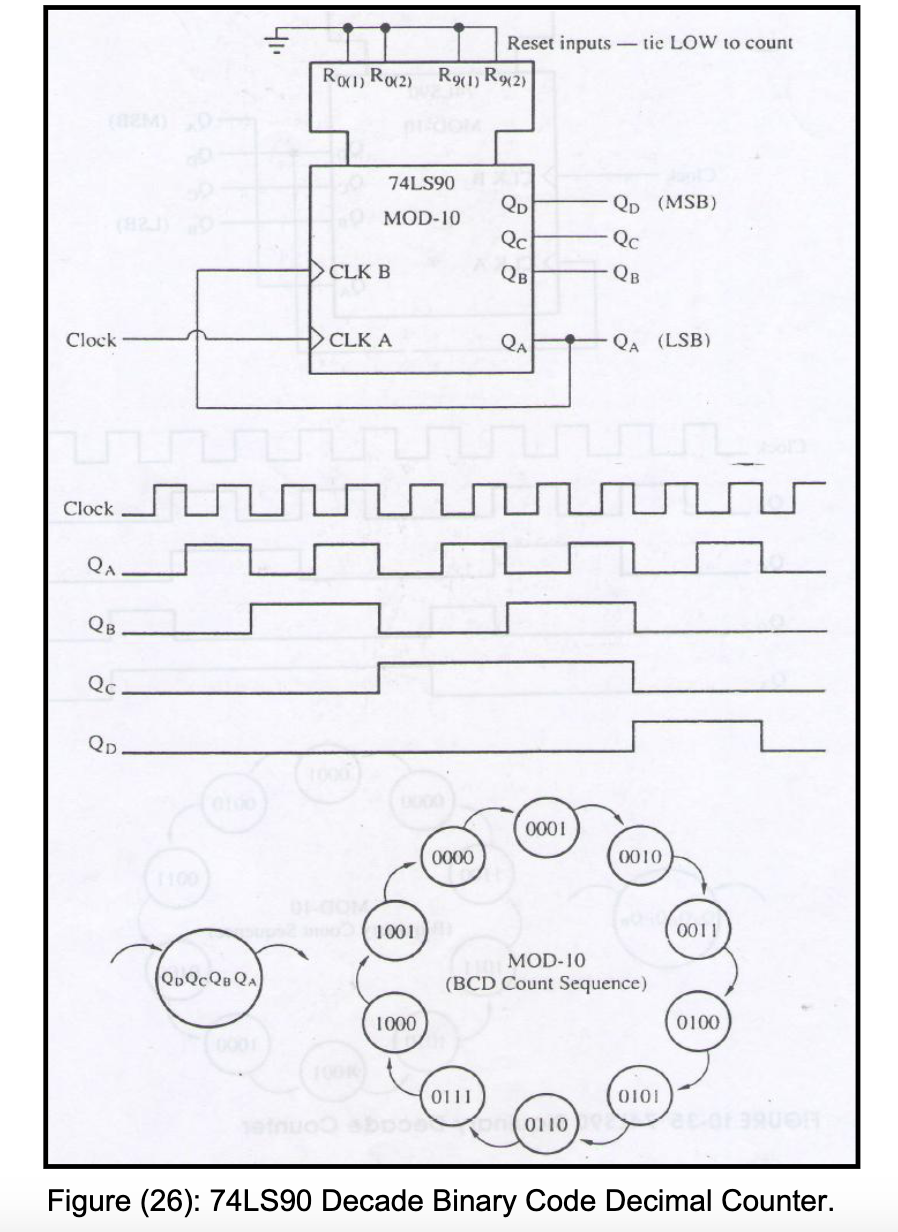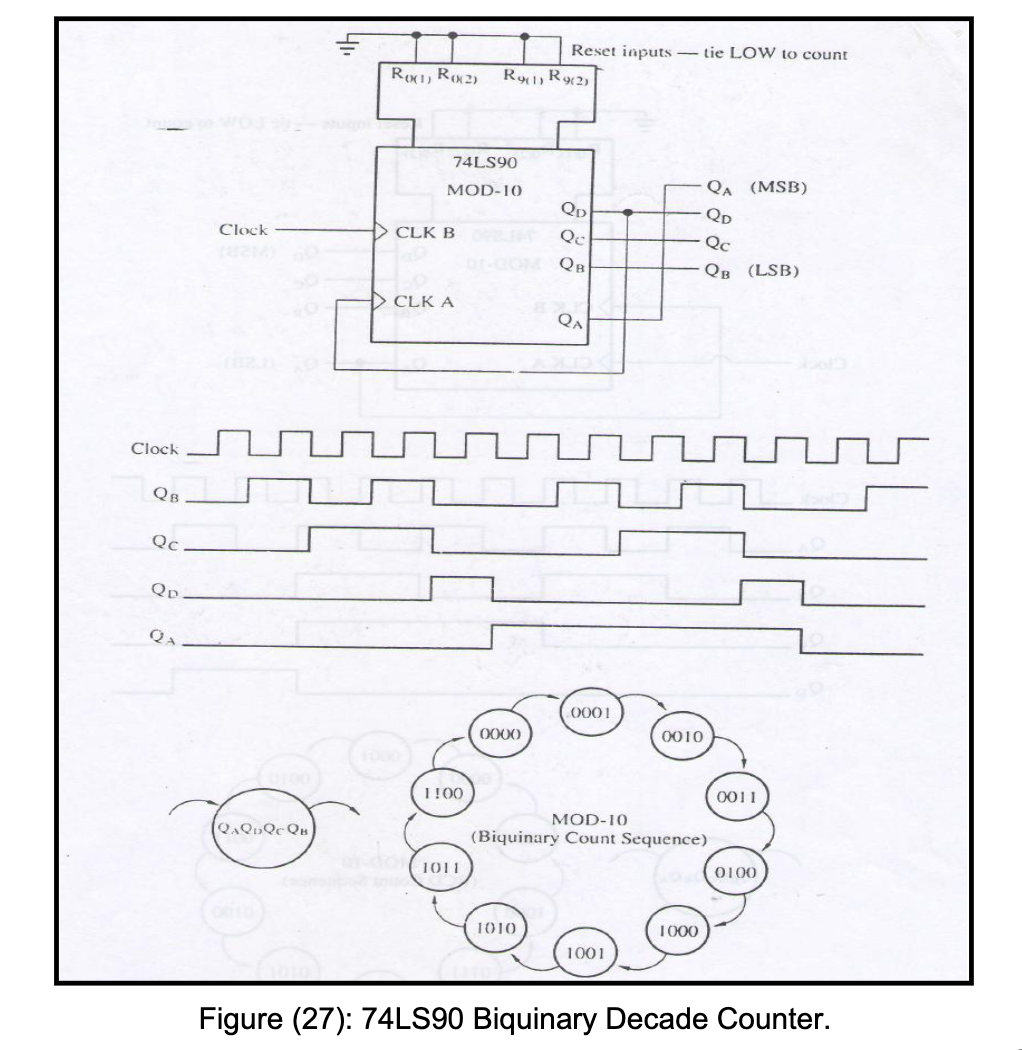Biquinary counting is another way to represent decimal (base-10) digits using a pair of binary (base-2) and quinary (base-5) digits. BCD counters like the 74LS90 separate out the mod-2 and mod-5 counters to allow the user to wire the counter in output modes of binary-coded-decimal counter (typical) or biquinary-coded-decimal (amongst others).
#todo add video of biquinary counter leds
biquinary : of, based on, being, or relating to a mixed-base system of numbers in which each decimal digit n is represented as a pair of digits xy where n = 5 x + y and x is written in base 2 (binary) as 0 or 1 and y is written in base 5 (quinary) as 0, 1, 2, 3, or 4.
In digital electronics, this manifests as a count-to-5 3-bit counter with a 4th top bit toggling every 5th count (so two cycles of 5 counts). This can also be thought of as a decade counter. See the second heading below for the state table.
| Note in digital electronics we represent the quinary (base-5) digit as a 3-bit value from 000 to 100. In other cases the full 5 digits are used.
Standard Decade Counter with a 74LS90
When using the 74LS90 BCD decade counter for the first time I was wondering why they had two separate counters in side, a mod-2 counter and a mod-5 counter.
The common way to configure the 74LS90 as a BCD 4-bit decade counter is as follows (source)- CLK A is the mod-2 counter input and CLK B is the mod-5 counter input:
 By connecting,
By connecting, Q_A, the output of the mod-2 counter (1-bit output that toggles every two cycles) to, CLK_B, the input of the mod-5 counter (3 bit output that counts up to 5), we create a mod-10 (decade) counter.
Biquinary Counter
But we can also create a biquinary counter, where for the 4 bit output the bottom 3 bits have two cycles of incrementing from 000...100, and the MSB is 0 for the first 5 sub-cycles, and 1 for the last 5. A timing and state diagram explains it better:
 Note clocks are falling edge triggered. The way to setup the biquinary counter is to have the main clock input into
Note clocks are falling edge triggered. The way to setup the biquinary counter is to have the main clock input into CLK B (the mod-5 counter) and have the Q_D output (MSB of the mod-5 counter) as the input to CLK A. This means when the mod-5 MSB goes from 1→0 (on the 5th count) the mod-2 counter will toggle. Note that the biquinary outputs must be taken as shown, with Q_A as the MSB and Q_B as the LSB.
Usefulness
The top bit can be thought of as a checksum .This way of counting is actually used in the Japanese abacus counting system. It seems it is also used in one of the worlds oldest existing working computers [hackaday], but there it is implemented with 7 relays for 7 digits, instead of the 4 bits above.
#todo add photo of abacus
#todo add project link